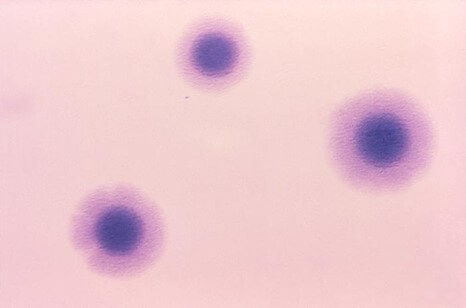7 Things You Should Know About Ureaplasma
You may or may not have heard of Ureaplasma. This lesser-known sexually transmitted infection (STI) can, in fact, also occur naturally. Here, we discuss what Ureaplasma is, symptoms, testing, treatment and long-term health risks.

Ureaplasma Urealyticum, also known as Ureaplasma, is a very small bacterium that both men and women can catch and transmit to each other during sex. How much do you know about Ureaplasma? Better2Know are here with the facts to help you get clued up.
GET YOUR UREAPLASMA HOME TEST KIT
1. Ureaplasma often presents no symptoms
Individuals with Ureaplasma often exhibit no symptoms, particularly in the early stages of infection. When symptoms do occur, they are similar in both men and women, and may include one or more of the following:
- Burning or stinging when urinating
- Need to urinate frequently
- Dull ache or pain in the urinary tract or genitals.
2. Ureaplasma is not always sexually transmitted
Ureaplasma can be spread by vaginal, penile, oral or anal sexual contact and intercourse. However, Ureaplasma can also be found in normal, healthy genital tracts. If a colony of Ureaplasma overgrows, it can cause irritation, without there needing to have been any risky behaviour.
3. Ureaplasma can lead to increased likelihood of infertility in women
In women, a prolonged Ureaplasma infection can impact her ability to conceive. In men, Ureaplasma can affect the number of sperm and the sperm’s ability to move.
4. Having Ureaplasma can increase your risk of acquiring other STIs
If a Ureaplasma infection is left untreated, there may be an increased risk of contracting other STIs, including HIV. Therefore, treating a Ureaplasma infection helps to protect your long-term health.
5. Ureaplasma can be treated with antibiotics
Some Ureaplasma infections will clear up on their own. However, Ureaplasma can also be treated with a course of antibiotics.
If antibiotics are taken, you should abstain from sexual intercourse until your treatment is finished and ensure that your sexual partners are also treated to avoid re-infecting each other.
GET TESTED FOR UREAPLASMA TODAY
6. You can test for Ureaplasma 14 days after an incident of concern
You should wait two weeks after potential exposure before testing for Ureaplasma. This ensures that the infection can be accurately detected.
7. Testing for Ureaplasma requires a urine sample
To test for Ureaplasma, all you need to provide is a simple urine sample. In women, bacterial infections, such as Ureaplasma, can also be detected with a swab test.
Better2Know provides a range of comprehensive screens which test for Ureaplasma amongst other STIs. This includes our:
- Platinum Screen – HIV, Chlamydia, Gonorrhoea, Syphilis, Herpes, Hepatitis B, Hepatitis C, Mycoplasma, Ureaplasma, Trichomonas and Gardnerella
- Full Screen – HIV, Chlamydia, Gonorrhoea, Syphilis, Hepatitis B, Mycoplasma and Ureaplasma
- Comfort Screen – Chlamydia, Gonorrhoea, Herpes, Mycoplasma, Ureaplasma, Trichomonas and Gardnerella
These screens are also available as convenient home test kits.
Speak to Better2Know in confidence
If you are concerned about Ureaplasma or any other STI, please get in touch with Better2Know’s highly trained sexual health advisors today. Our team is available by phone 24 hours a day, 7 days a week, or you can book your confidential appointment online.
Categories
- Awards
- Bacterial Vaginosis
- Blood Tests
- Cardiovascular Health
- Cervical Cancer
- Chlamydia
- Condoms
- Covid-19
- Gardnerella
- Genital Warts
- Gonorrhoea
- Health and Wellness
- Hepatitis A
- Hepatitis B
- Hepatitis C
- Herpes
- HIV
- HIV (AIDS)
- Home Testing
- HPV
- Instant Testing
- MSM
- Mycoplasma
- News
- Non-Specific Urethritis
- PAP Smear
- Pre-Pregnancy
- Sexual Health
- STD Symptoms
- STD Tests and Screens
- STI Transmission
- Stigma
- STIs
- Swab Tests
- Syphilis
- Trichomonas
- Ureaplasma
- WSW
- Zika
